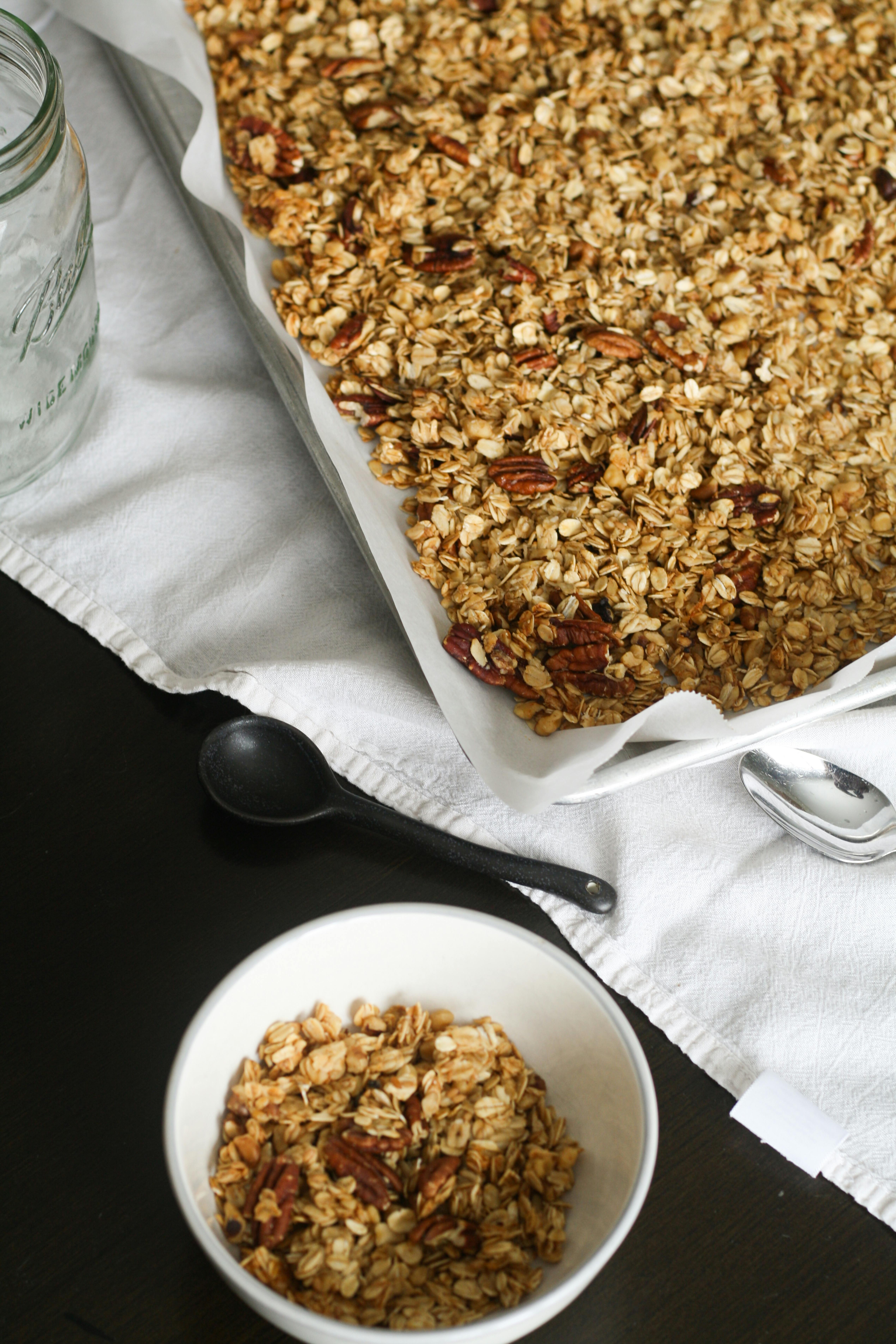Apply Now
Smart Ways to Enjoy Beans: Gluten-Free Choices for 2025
Beans have been a staple in diets around the world due to their remarkable nutritional profile and versatility. As people increasingly seek gluten-free options, beans emerge as a prime choice in gluten-free cooking. With numerous types of beans available—such as kidney beans, black beans, chickpeas, and more—these gluten-free legumes not only offer high protein content but also a wealth of health benefits. This article will explore how to incorporate beans into your diet effectively, focusing on their unique nutrition, potential recipes, and the various ways they cater to those with gluten sensitivity.
Whether you are a seasoned chef or a cooking novice, you'll find that enjoying beans is both simple and rewarding. From bean salads and hearty soups to bean burritos and chili, the possibilities are endless. With the rise of health consciousness and culinary creativity, now is the perfect time to embrace beans as part of your gluten-free lifestyle. Let's delve deeper into the world of beans and discover smart ways to enjoy these fiber-rich foods.
Understanding the Nutritional Power of Beans
Building a foundation of knowledge about beans and their health benefits is crucial for anyone looking to improve their diet. Beans are renowned for their high protein content, making them an excellent meat substitute for vegans and vegetarians. Alongside protein, beans are rich in important vitamins and minerals—including magnesium, potassium, and iron—which play vital roles in maintaining overall health.
In addition to protein, beans are an exceptional source of dietary fiber. Fiber plays an essential role in digestion and can help prevent constipation. Including a variety of beans in your meals enhances your fiber intake and supports a healthy weight management strategy.
Moreover, different bean varieties bring diverse flavor profiles and textures to your dishes, impacting not just nutrition, but also taste. Understanding the specific health benefits tied to various beans is beneficial. For example, kidney beans are known to help regulate blood sugar levels, while black beans are famous for their antioxidant properties.
Taking a closer look at how these legumes might fit into your lifestyle will help you discover new and exciting ways to incorporate them into your meals and snacks.
Exploring Different Types of Beans
One of the key aspects of enjoying beans is understanding the different types available and how they can be utilized in cooking. Let's explore some popular beans:
1. **Kidney Beans**: Recognizable by their deep red color and kidney shape, these beans are popular in chili and salads. They boast a high protein content and can aid heart health.
2. **Black Beans**: Known for their black exterior and cream-colored interior, black beans are commonly used in Latin American dishes and are rich in antioxidants, supporting immune health.
3. **Chickpeas**: Often referred to as garbanzo beans, chickpeas are incredibly versatile. They can be used in dishes like hummus, stews, and salads. They're a great source of plant-based protein and fiber.
4. **Pinto Beans**: These beans can be easily mashed and are often found in Southwestern and Mexican cuisine. Their creamy texture and rich flavor make them great for bean burritos or chili.
5. **Green Beans**: While not typically what you think of when you hear the word “beans,” green beans belong to the same family and are packed with vitamins A, C, and K, supporting overall health.
By incorporating a variety of these beans into your meals, you can enjoy a range of health benefits while adding incredible flavor to your dishes. Understanding each bean's unique properties enables creative opportunities in the kitchen.
Nutritious Benefits of Incorporating Beans in Your Diet
The health benefits of beans are manifold, making them a smart addition to any diet, particularly for those managing gluten sensitivity. Incorporating legumes into meals can aid in overall health by providing several essential nutrients that are sometimes hard to obtain, especially on a gluten-free diet.
Beans are often considered a superfood due to their high fiber content, which assists not just in digestion but also in improving heart health. Studies have shown that consuming beans regularly can reduce cholesterol levels and help manage blood sugar, which is especially beneficial for individuals with Type 2 diabetes.
Furthermore, the plant-based protein found in beans is vital for muscle growth and repair, making them an excellent choice for athletes and those leading an active lifestyle. For vegans and vegetarians, beans also provide a source of essential amino acids that are important for overall health.
Including beans in your diet may also support healthy weight management. With their low calorie and high fiber content, beans can help you feel full longer, reducing the urge to snack excessively.
With these remarkable health benefits in mind, it becomes clear that beans are not just a filling food but are essential contributors to a healthy diet.
Cooking Tips for Perfectly Prepared Beans
Understanding how to cook beans is key to making the most of their flavor and nutritional benefits. Whether you opt for dried beans or canned varieties, the preparation method can significantly affect the final dish.
For dried beans, it's essential to soak them before cooking. This helps to soften the beans and reduce cooking time. Generally, soaking beans for 6-8 hours or overnight is recommended. After soaking, drain and rinse the beans, then simmer them in fresh water until tender. Cooking times can vary depending on the type of beans, so always check for doneness.
Canned beans offer a convenient alternative and can be used right away. When using canned beans, be sure to rinse them under cold water to reduce sodium content. They're perfect for quick meals, such as bean salads or adding to soups for added nutrition.
Additionally, experimenting with herbs and spices while cooking can enhance the flavor of your beans. Try garlic, cumin, or chili powder for a kick, or fresh herbs like cilantro to brighten dishes.
Incorporating these cooking tips will lead to delicious, satisfying bean dishes that you'll want to make over and over.

Delicious Bean Recipe Ideas for Every Meal
With beans being as diverse as they are nutritious, a range of recipes can highlight their deliciousness throughout any meal of the day. Whether you prefer spicy flavors or hearty comfort foods, there are countless ways to enjoy beans in your cooking.
One delightful way to incorporate beans is through salads. A **Mediterranean Bean Salad** combining chickpeas, black beans, and fresh vegetables can serve as a nourishing side or a light main dish.
For a warm and filling option, consider a classic **Bean Chili**. This dish typically blends kidney beans, pinto beans, tomatoes, and spices, simmered to perfection—ideal for a comforting evening meal.
Give your lunch a boost with **Bean and Rice Burritos**. Simply mash black beans with spices, wrap them in whole grain tortillas with rice, and top with salsa for an easy lunch or dinner.
Lastly, for a hearty soup, a **Bean Soup Recipe** featuring navy beans, carrots, and herbs can be both filling and nutritious. Serve it with a slice of gluten-free bread for a complete meal.
As you explore these recipes, you’ll find the perfect way to incorporate beans into your meals while enjoying their rich history and health contributions.
The Impact of Beans on Gut Health
The gut health benefits of incorporating beans into your diet are numerous. Thanks to their high fiber content, beans can promote digestive health by facilitating regular bowel movements and sustaining beneficial gut bacteria.
Fiber acts as a prebiotic, meaning it essentially feeds the good bacteria in our intestines. This balance is essential for a healthy microbiome, which can significantly impact overall health, including immunity and digestion.
Many people worry about digestive discomfort related to beans, which often arises from the oligosaccharides present in legumes. However, soaking beans before cooking and gradually incorporating them into your diet can help mitigate these effects.
Additionally, the health benefits of beans extend to helping with inflammation. A regular intake of high-fiber foods like beans has been linked to lower levels of inflammatory markers in the body, supporting a healthier gut and overall well-being.
These insights underscore the importance of beans not only as a source of nutrition but also as a key player in promoting gut health through dietary changes.
Exploring Flavor Profiles of Beans
A fascinating aspect of beans is their diverse flavor profiles, which can greatly enhance meal variety. Different beans can complement various cuisines and can be seasoned to match the desired flavor palate.
For instance, **black beans** have a deep, savory flavor that pairs well with spices like cumin and chili, making them a great choice for Mexican dishes. **Kidney beans**, on the other hand, have a rich and slightly sweet flavor which works well in hearty stews and chili recipes.
**Navy beans**, known for their mild taste, are excellent in soups and baked bean dishes, while **chickpeas** can be roasted for a crunchy snack or blended into a creamy dip. Exploring these various flavor profiles allows cooks to create meals that cater to differing tastes, providing a realistic approach to using beans in dishes.
Incorporating unique spices and ingredients can further enhance the bean experience. One might try adding citrus zest to brighten recipes, or herbs like thyme and rosemary for a fresh, fragrant touch.
Ultimately, recognizing the versatility of beans encourages creativity in the kitchen, making them an enjoyable base for a multitude of meals.

Tips for Storage and Preservation of Beans
Understanding how to store and preserve beans is essential for maximizing their shelf life and nutritional benefits.
When it comes to dried beans, they can be stored in a cool, dry place for one to two years without losing their quality, as long as they're kept in airtight containers. Be sure to keep them away from moisture, which can lead to spoilage.
Canned beans, on the other hand, may last up to five years in your pantry. It's vital to check expiration dates and store them in a cool, dark place. Once opened, canned beans should be kept in airtight containers in the refrigerator and consumed within three to five days.
For those who wish to keep prepared beans longer, freezing cooked beans is a great option. Simply portion out the beans into freezer-safe bags or containers, and they can last 6-12 months in the freezer.
Additionally, if you've got an excess of fresh beans, blanching them before freezing will retain their flavor and nutrients.
Educating yourself on proper storage techniques will help ensure your beans remain fresh and ready to use.
Final Thoughts on Beans in a Gluten-Free Diet
Incorporating beans into a gluten-free diet opens a world of delicious, nutritious options that promote health and wellness. From their abundance of protein and fiber to their versatility in the kitchen, beans are a cornerstone food that can cater to various dietary needs and preferences.
As we've explored, understanding different types of beans, their cooking methods, nutritional benefits, and storage practices can enhance your culinary journey. By experimenting with recipes and exploring the flavor profiles of various legumes, you can create delightful meals that tantalize the taste buds while supporting overall health.
Don’t hesitate to include beans in your meals and enjoy all the health benefits they offer. Embrace the smart ways to enjoy beans and elevate your gluten-free cooking to new heights.
Its part of generated content. Can i generate another part?


